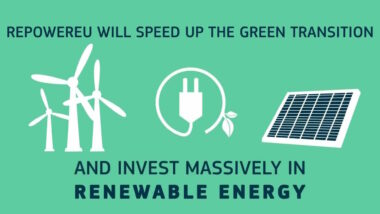We are hoping that you are looking for information on how biogas is produced from waste. We will explain that in just a moment. But, first, we ask you to pause for thought, because the whole idea of energy from a fuel good enough to replace natural gas, must at first sound like nonsense! Yes?
We have not gone crazy! There is a saying that: “Where there is muck there is money”, but it’s hard to believe.
It is remarkable to think that it is possible to make clean renewable energy from muck. So read on and we will explain how Biogas is Produced from Waste. The secret is out once you realise the truth behind the unseen beauty of garbage.
You might think garbage is just that: garbage.
But did you know that your unwanted leftovers can help light up a bulb? Yes, you heard it right!
It’s not sorcery; it’s the power of science.
So buckle up, as we embark on a journey to understand “How Biogas is Produced from Waste.” This is the story of turning muck into energy and, quite accidentally, producing a natural fertiliser on the side. A two-for-one, bargain-bin miracle!
The Magnificent Process: A Glimpse of the Magic
To understand “How Biogas is Produced from Waste”, we first need to recognize what biogas is. Biogas is a type of biofuel, which is naturally produced from the decomposition of organic waste. Everything from food scraps to cow dung can be used, making it an incredibly versatile process.
Now, how is this energy extracted from our everyday waste? The answer is simple: Anaerobic Digestion. This might sound like a medical term or something related to dinosaurs, but it’s just a fancy way of saying “decomposition in the absence of oxygen”. What is important is that it’s during this process that the magic happens.
Anaerobic Digestion: The Transformation Act
Anaerobic digestion occurs in four stages: hydrolysis, acidogenesis, acetogenesis, and methanogenesis.

It’s like the waste is getting a makeover, only instead of new clothes, it’s being broken down and turned into acid.
In the third stage, acetogenesis, these fatty acids are transformed into acetic acid, carbon dioxide, and hydrogen.
Finally, methanogenesis converts these components into methane, carbon dioxide, and water. The resulting methane is what makes up the majority of biogas, and it’s this that we can burn for heat and power.
The Unsung Hero: The Biogas Plant

Instead of flour, sugar, and butter, the plant uses organic waste. The recipe’s outcome isn’t a cake, though, but a renewable energy source.
Not as tasty, but arguably far more useful in the long run!
The Bonus Round: Creating Natural Fertiliser
During the process of “How Biogas is Produced from Waste,” we stumble upon an exciting by-product: digestate.

Digestate is packed with essential nutrients, such as nitrogen, potassium, and phosphorous. This makes it an excellent, eco-friendly alternative to chemical fertilisers.
So not only are we creating a renewable source of energy, but we’re also nurturing our gardens at the same time. The circle of life, indeed!
Reducing Waste and Embracing Sustainability

The beauty of understanding “How Biogas is Produced from Waste” lies not just in the production of renewable energy. It’s also in the reduction of waste that would otherwise end up in landfills or incinerated.
Every piece of waste that we can turn into biogas is a step towards a greener, cleaner future. Not only are we producing a renewable source of energy, but we’re also reducing our carbon footprint. It’s a win-win situation.

That’s a lot of benefits from what was once just a pile of garbage!
How Biogas is Produced from Waste: A Marvel of Science and Sustainability
Isn’t it fascinating how a process as simple as “decomposition” can lead to such wondrous results?
The whole concept of “How Biogas is Produced from Waste” might have seemed like a complicated jigsaw puzzle at first, but once you understand the pieces and how they fit together, it becomes a beautiful image of science and sustainability working hand in hand.
The anaerobic digestion process might not be as easy as baking a cake, but the outcome is incredibly satisfying. And hey, who needs cake when you have a renewable energy source and a natural fertiliser?
Adding Fuel to the Future: Biogas and its Potentials

As our understanding of the process improves, so too will our efficiency. We’re turning waste into gold (not literally, but metaphorically), and the future is certainly shining bright.
Summary: The Magic of Turning Muck into Energy and More

Waste isn’t just waste anymore; it’s a potential source of renewable energy. It’s a treasure trove of resources that we’ve only just begun to tap into. And with every piece of garbage that’s transformed into biogas, we’re a step closer to a more sustainable and cleaner world.
So the next time you take out the trash, give it a second thought. That’s not just a bag of garbage. That’s potential energy and a natural fertiliser waiting to be used.
Talk about seeing the world through green-tinted glasses!
Remember, every little thing matters when it comes to our planet. And who would have thought that our journey to sustainability could begin with understanding “How Biogas is Produced from Waste”?
It’s certainly “food for thought” – or should that be “thought for food waste”? Either way, there’s no denying it – “waste” can be a wonderful thing!






